#wheelchair users
Text
Ok so at this point I've had two people roll up to me in manual wheelchairs, well, one of them was somebody pushing somebody who was nonverbal at the time, but it still counts. They asked me why I had zip ties around my tires.
It's winter where I'm living and we have really bad snow. And the snow plow people are really bad at their jobs probably because there aren't snow plow people who clean sidewalks. As a solution I got to thinking about how I could increase the traction on my wheels. And the most redneck thing I could think of was taking a bunch of zip ties and tying them around my wheels. They last surprisingly long, and work surprisingly well. It's basically the same premise as chains for your tires during the winter.
I chose to space them out pretty evenly so there's about one for every spoke. You could probably do more or less depending on how many you want and how much traction you get but I wouldn't go more than three per spoke. I realize that it's a bit later in the winter, and I probably should have made a post about this sooner, but I came up with it about a week ago. So please share this, even if you're not disabled, because there are tons of people I know who are stuck in their houses because they can't get around in the snow. A pack of zip ties costs about $5, which compared to $200 knobby snow tires is a big save, and if you want to invest you could get colored zip ties.
#disability#disabled#wheelchair use#cpunk#cripple punk#wheelchair users#manual wheelchair#physically disabled#physical disability#mobility aids
66K notes
·
View notes
Text
Petition to add more disabled magical creatures in fantasy
Like picture a mermaid. When they have to be on land their tail turns to legs, but because their body is used to lower gravity their joints tire easily and are chronically in pain.
Also depending on how deep in the ocean they live, it’s likely they have circulation problems because their body is used to the water pressure holding everything where it needs to be and now their blood is always fucking pooling in their legs and they have to wear compression socks everywhere.
Wheelchair user mermaids. Partially/fully blind mermaids because who needs to see when there’s no light at the bottom of the ocean?
Mermaids with sensory issues who have to wear headphones all the time because sound is so much louder up here on land and they are constantly overstimulated. And also the sun is simply Too Bright™.
Mermaids who have POTS because in the water postural changes make no difference and their bodies don’t know how to stabilize with so much gravity.
I’m really fixated on the mermaids rn but PLEASE feel more than welcome to add more!!!! I wanna hear about disabled dragons
#fantasy#high fantasy#disability#mermaids#disability representation#books and reading#fantasy books#dragons#potsie#chronic pain#chronic fatigue#wheelchair users
2K notes
·
View notes
Text

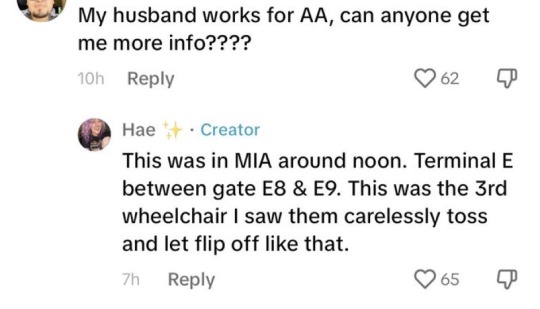
Why I’m scared to travel with medical equipment
#chronic illness#chronic pain#disability#pots syndrome#spoonie#chronic fatigue#wheelchair users#wheelchair#invisible disability#tiktok video#to spread awareness#chronic disability#physical disability
2K notes
·
View notes
Text
There is one thing from Star Trek: Discovery that sticks with me. It's the one crewmember in a wheelchair.

Why? Because in a future where almost any medical condition is curable, being disabled or using a wheelchair isn't seen as something that needs to be fixed.
Does he have a name or a backstory? No. But unlike Pike (ToS), Emory Erickson (Enterprise), or Admiral Jameson (Next Generation), he's not in the wheelchair because of some tragic accident or illness that left them scarred, paralysed, and/or disabled. He's not made the centre of a story of struggle and pity like Melora Pazlar (Deep Space 9).
There's no story of him trying or needing to be "fixed", "healed" or "cured", there's no story of him trying to adapt, there's no story of him getting in the way or being a burden. He's not seen as a tragic victim. He's not seen as unfit for duty or disabled.
He's just a guy in a wheelchair and a member of the crew.
#this is technically called incidental representation#which is representation of people going about their everyday lives#but this means everything to me#if only my thesis were on wheelchair users in literature and media#star trek#star trek discovery#discovery#star trek: discovery#disability#disability representation#wheelchair users#disabled representation#wheelchair
809 notes
·
View notes
Text
Canada's chief accessibility officer is taking airlines to task for failing to treat wheelchair users with respect after Air Canada forgot last week to bring her wheelchair on a cross-country flight.
Stephanie Cadieux said that when she flew from Toronto to Vancouver on Friday, she discovered that her wheelchair had been left behind.
She posted about the incident on X, formerly Twitter. Her posting received overwhelming support — almost 650 retweets and more than 2,500 likes.
"This was immensely frustrating and dehumanizing — and I was furious," she later said in a post on her LinkedIn account. "The tweet has been widely viewed and shared. Air Canada responded and my chair has been returned to me."
Full article
Tagging: @politicsofcanada
#cdnpoli#canada#canadian politics#canadian news#canadian#air canada#stephanie cadieux#ableism#disabled#wheelchairs#wheelchair users#ableism tw#accessibility
261 notes
·
View notes
Text
ATTENTION: Ambulatory wheelchair users exist.
Ambulatory wheelchair users, for those who don't know, are disabled people who use and need a wheelchair, though they may be able to walk small distances and/or at certain times.
I hate how many people think wheelchairs are only for those who can't walk, stand, or even move their legs. Just because someone in a wheelchair moved their legs, stood up, or even walked around a bit doesn't mean they can walk all the time. They still need a wheelchair for when they can't walk. You didn't "catch them", this doesn't mean they're faking being disabled. It just means you're ignorant.
This is just one of the MANY reasons why we need more education on disabilities. There is sooo much ableism that stems from plain ignorance on basic information about disabilities.
#wheelchair#wheelchair users#mobility aid#mobility aids#babe with a mobility aid#disability#disabled#physical disability#physically disabled#cripple shit#fuck ableism
179 notes
·
View notes
Text








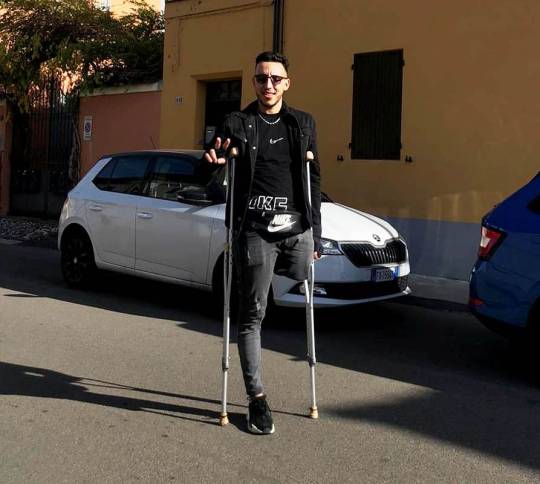









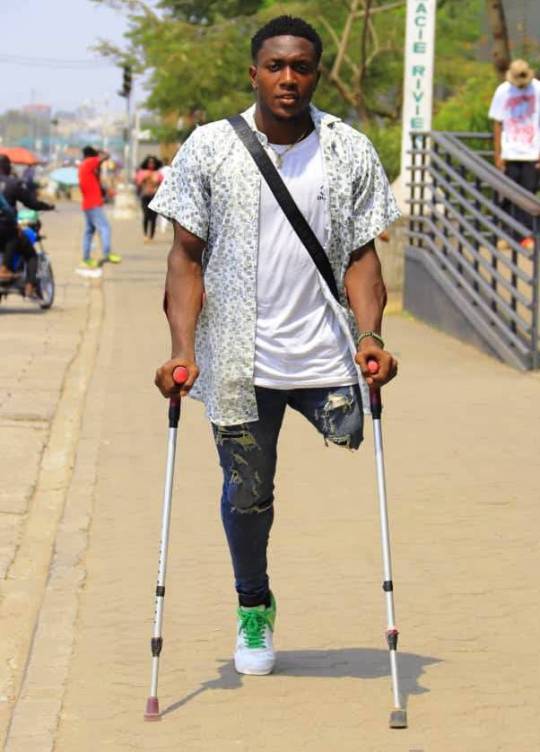


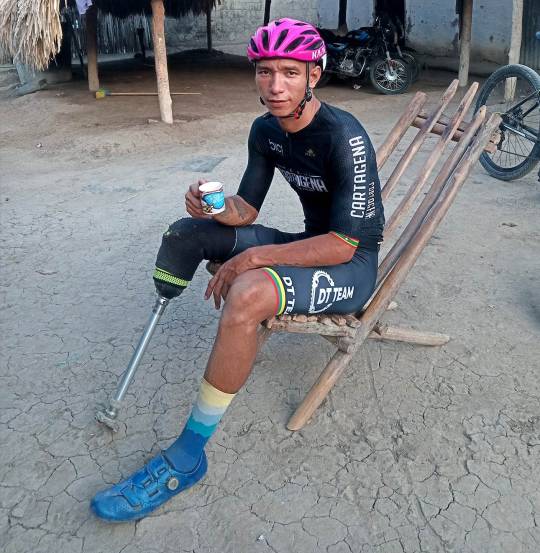


Some beautiful guys
#male amputees#leg amputee#arm amputee#wheelchair users#above elbow amputee#above knee amputee#bilateral leg amputee
72 notes
·
View notes
Text
Writing Wheelchair Users
Hello hello hello it’s another Disability Writing Guide from me! As always, this is a general guide gleaned from my personal experience of working with, taking classes on, researching, and having friends in disabled communities. This is writing advice, not a primer on disability justice (although I’m always happy to talk about disability justice).
Okay. Disclaimer over. Onto the writing advice.
Different Types of Wheelchairs
Before you write a character that uses a wheelchair, you need to know why they need the chair. Different disabilities mean different types of chairs. Some questions to get you thinking -
Manual chairs: Are they temporarily disabled, or is this long-term? Is the chair for indoor and outdoor use? What different types of terrain will the chair need to navigate? Is the person active and able to move themselves, or would someone else be pushing the chair? What kind of postural support does this person need? Can they transfer themselves in and out of the chair?
This guide is helpful for figuring out some of the options that are available and why a person might need them. Please do the research to ensure the type of chair you pick makes sense for the disability you’re writing about. Do not pick a chair based on aesthetics, or avoid a chair because some of the functions seem complicated.
Power wheelchairs: Many of the same questions apply about posture, indoor/outdoor use, and types of terrain. Ability to move oneself does not apply, nor does temporary disability or transferring ability.
How is the chair steered? If someone doesn’t have strong fingers, joysticks can be ultra sensitive. I’ve seen a chair that someone steered with her head, and have heard of chairs that are steered by tongues. Just because someone has very limited mobility doesn’t mean they can’t be independently mobile to some extent.
If the character does a lot of work with their hands, it may make sense for the chair to have a tray for them to work on. This is more common in power chairs than in manual chairs.
Not a question, but power wheelchairs generally have a top speed between 5-10 mph, with the average on the lower end of that scale. Sometimes they can be made to go faster, but that’s generally not useful for the person using the chair, and can damage the chair itself. Before you make your character’s wheelchair insanely powerful and fast, please think about if that makes sense for your setting, your character, and their disability. It’s fun, but it’s pretty unrealistic, and wheelchair users hear enough jokes about them “running people over.”
I know there are fancy wheelchairs out there that like, go up and down stairs. These are unreasonably expensive and never really work the way they say they do. If you want your character to be realistic, be extremely cautious about them having the latest and greatest mobility tech.
All wheelchairs are expensive. That being said, power wheelchairs are much more expensive. The more features it has, the newer it is, and the more customized to a person’s needs, the more expensive it will be.
Wheelchair Etiquette
I think I get a lot more disability stuff on my social media because I talk and think and read about it more, so I’m going to start with the very basics. I apologize if it’s repetitive or I’m being unnecessarily detailed!
Do not lean on a person’s chair. Do not have other characters lean on a character’s chair. If they are close friends, maybe, but generally speaking, a wheelchair should be treated as an extension of someone’s body - because it is. So no leaning, sitting on, or pushing it without being explicitly asked.
Also, of course, people who use wheelchairs have fun just like everyone else. Some people do let others ride on the backs of their chairs, or try stupid things just to see what happens. A character’s willingness to do this should be consistent with their personality, and the fact that their chair is likely a very expensive and medically necessary piece of mobility equipment.
Do not use a wheelchair outside its intended purpose. See the above points - it’s an extension of someone’s body, it’s expensive, and it represents someone’s mobility and independence. Shouldn’t be used for moving things or other people. Again, there can be exceptions to this.
Do not refer to someone by their mobility aid. Some people are fine being referred to as wheelchair users. Others prefer “person who uses a wheelchair.” Do not ever call someone “wheelchair guy,” “wheelchair woman,” or “wheelchair person.” A wheelchair is something you use. It is not what you are.
People customize their wheelchairs in a lot of ways. Obvious ways are stickers, colors, ribbons, etc, but customization can also be a tote bag with necessities hanging off the back, a particular cushion, or blanket.
Do not move someone else’s wheelchair without their permission. Firstly, no one should even touch a wheelchair without permission. Secondly, moving a wheelchair means its owner may not be able to find it or transfer into it when the time comes. Last, many people don’t like to be separated from their chair, or to have it leave their sight. It’s an extension of their body. They don’t want it disappearing somewhere they can’t follow.
Treat wheelchairs with care. This underlies everything I’ve written, but it’s worth saying explicitly. In my opinion, it would be unrealistic to have a wheelchair user and/or their friends be careless or reckless with their mobility equipment. Once again - it is expensive, it is their mobility, and it can take a long time to replace or fix.
This ties into the above point, but not all wheelchairs are created equal. They are not interchangeable. Their functions are usually tailored as much as possible to the person that uses them, and that makes a big difference in someone’s comfort, mobility, and independence.
Do not talk down to wheelchair users. This has several meanings. The first is to not be condescending, ever. The second is that some wheelchair users prefer that able-bodied people crouch or sit to speak to them, so they’re at a more equivalent level. Others find this condescending, so proceed with caution and when in doubt, ask. Do not bend over to speak to someone, or tower over them, forcing them to crane their neck. Both of these are always considered poor form.
Wheelchair users do not need, and often do not want, to share their diagnoses. If this character is a major part of your story, their diagnosis and its particulars will affect much of what they do, so please have a specific diagnosis in mind. If they’re a smaller character, or speaking to another character, they may not discuss the particulars of their life or diagnosis, and that’s okay. No one needs to explain their disability, visible or invisible.
Do not use the word cr*pple. Some wheelchair users may use it to describe themselves, especially to other disabled people. As an abled person myself, I would not presume to use that word and I would recommend others do not either.
People are not “wheelchair bound” or “confined to a wheelchair.” People tend to really appreciate the freedom and increased mobility that their wheelchair provides.
Other Considerations
People who don’t have mobility in their extremities often don’t have great circulation in their extremities, either. This means people can get cold much faster than able-bodied counterparts.
People with poor circulation develop extremely sensitive feet. Feet being bumped or even just brushed can be painful.
A character may use a wheelchair and be able to walk, or may use a wheelchair and cannot walk. Either way, they can and almost certainly do still wear shoes.
People with low mobility, or anyone sitting in a wheelchair for hours at a time, need to be shifted and moved, or their weight redistributed, so they don’t develop pressure sores over places where bone is close to the skin (hips, wrists, ankles if lying down). This is non-negotiable. Your wheelchair user character will not be able to stay in the same position for six hours and be okay, no matter how padded their chair might be.
Your wheelchair user’s feet should not really be touching the ground, unless they’re in a hospital chair and it is a short-term situation. All wheelchairs come with footrests, and feet are kept elevated on a footplate. It is hard to hold your feet up continuously while moving, and there’s no real reason to do it that way.
Ableism is real, and it permeates every public, private, and internal space in the real world. If a space has stairs and no ramp, your wheelchair user character can’t enter. If the sidewalk is broken or steep, a wheelchair user may struggle to navigate. If a venue is accessible but the bathroom isn’t, a disabled character may not feel comfortable being there for long stretches of time. If your characters are going to a bar, likely it’s too high for your wheelchair using character to order. If your character uses a powerchair and is going somewhere overnight, there’d better be a place to charge their chair. Even if you’re writing in a fantasy setting, think about what it would mean for your imagined world to actually be fully accessible. If the world you’re writing in isn’t fully accessible, think about what that means for your characters, what impact it has on them, and what they have to navigate to be out in the world.
Lastly, and very importantly, make your character’s disability consistent. If your character is entirely paralyzed below the waist, you’re going to have to think about how they use the bathroom. It may not come up explicitly in your story, but it will absolutely affect the way the character behaves, where they feel comfortable going, and who with. Do not give your character zero lower body mobility and then refuse to think about bathrooming and sexual function. It is really, really disappointing to see people write disabled characters and then avoid the aspects of disability that they may find distasteful, distressing, or too difficult to think about. Okay one more time:
Many wheelchair users have sex. All wheelchair users need to use the bathroom. You don’t have to write about it, but you should think about what it looks like for your character. You’re writing a full disabled person, not an otherwise abled person whose legs don’t work. You’re also not writing a person whose entire personality is their wheelchair and thus cannot be in any kind of sexual relationship. Figure it out.
More Mobility Aids
A person with partial ability to walk may have a wheelchair and a cane, or arm crutches for when they’re able to be more mobile.
A mobility scooter is a possible alternative to a wheelchair if your character has higher mobility and transfer ability but can’t travel long distances. This is a good choice for someone who can get in and out of a wheelchair with ease and has upper body mobility with limited lower body mobility, but can’t self-propel over long distances.
A Hoyer lift is a mechanical lift used to move people with low mobility in and out of their wheelchairs. It is often unrealistic to have a person transfer someone else alone. It is almost always a two person job, and that still puts a lot of strain on the caregiver’s body.
A transfer belt is a very low cost, specially designed belt that makes transferring safer. Its primary purpose is to give caregivers something to hold onto besides a person’s body, which is safer for both parties. A transfer belt is only used when the person being transferred can stand and take at least a few steps mostly on their own.
Service dogs can be trained to open doors, retrieve items, or assist with disabilities that may not relate to the inability to walk.
Hospital beds may be used for characters with limited mobility. The heads and feet of these beds can be lifted or lowered, along with the entire bed. This aids in transferring, as well as shifting weight and position so that bedsores do not develop.
Wheelchair accessible cars or vans are great tools for independence. They’re also incredibly expensive. A van that is equipped to transport wheelchairs will have ports to anchor the chair and straps. A more sophisticated van that would allow the wheelchair user themselves to drive is usually customized to the user’s ability and needs, and even more incredibly expensive.
Caregivers I am including as mobility aid(e)s. They are trained professionals, although family members and friends can also be caregivers. Often a caregiver will be a CNA (Certified Nurse Assistant) and will be trained to help with physical needs and ADLs (Activities of Daily Living). This ranges from transferring and bathing to feeding, brushing teeth, and massage. A CNA is not able to provide any care that breaks the skin (injections, IVs), treat injuries, or dispense any medication (this includes over the counter meds). A registered nurse would be needed to perform any of these things.
Media with Wheelchair Users
I will be honest, I have a lot of memoir recommendations, but movies and TV mostly escape me. I’ll do my best! As always, I am sticking to things I personally have read or watched.
Sitting Pretty by Rebekah Taussig is a memoir by a young wheelchair user. It discusses ableism, disability, and independence.
A Body, Undone by Christina Crosby is a memoir by a queer woman who acquired a disability partway through her life. It deals with her adaptation to her life and reflects on mobility, independence, and the body.
Being Heumann by Judith Heumann is a memoir by a prominent disabled woman and activist. She tells her life story and describes the crucial work she did in working for disability rights in America.
Care Work by Leah Lakshmi Piepzna-Sanarasinha is a collection of essays by a multiply disabled, queer femme-aligned person of color. They include reflections on disability justice, disabled futures, and many aspects of disabled lives.
Demystifying Disability by Emily Landau is an all-purpose primer on many different types of disability and how to talk about them. It’s an intro to ideas surrounding disability.
Disability Visibility by Alice Wong is a collection of essays by many different disabled people about their lives and views on disability. It covers many different types of disability, and among the authors are some wheelchair users, including prominent late activist Harriet McBryde Johnson.
Spoiler alert: In the later seasons of Bones, though I don’t know exactly when, a main character acquires a disability that means he uses a wheelchair. He struggles with internalized ableism and difficult emotions surrounding disability in a limited but thoughtful portrayal.
Me Before You is bad disability representation. Both the book and the movie are bad representation. Happy to talk about this in DMs if you do not understand why. Do not use it as positive rep or research.
#disability writing guide#writing disabled characters#writing disability#disability#disability justice#writing advice#writing wheelchair users#how to write wheelchair users#wheelchair users
560 notes
·
View notes
Text
This seems like a cool idea, but this would mean that all the stairs need to be relatively shallow so that the ramp incline isn’t too steep, otherwise how are you supposed to wheel yourself up/avoid going down too fast? Any wheelchair users have thoughts on this?
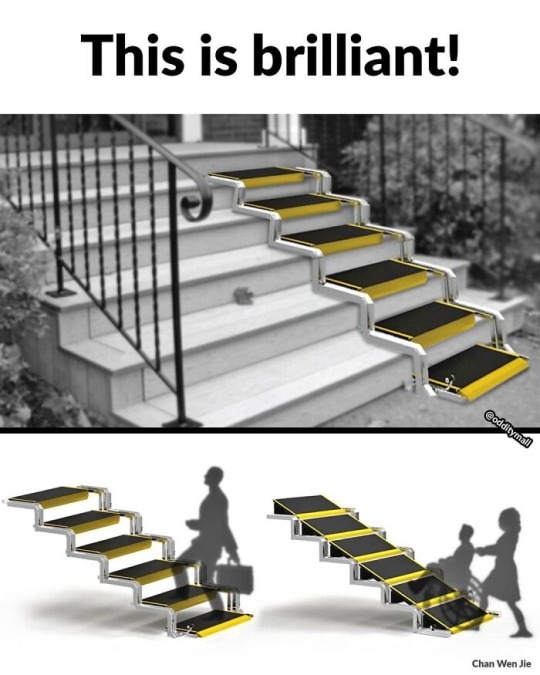
220 notes
·
View notes
Text
ITS DISABILITY PRIDE MONTH!!!


#disability pride#disability pride month#chronic disability#disability#spoonie#wheelchair#wheelchair users#feel free to add on with other gifs of disabled people having a blast#i wish i could spin like that i can only do a half spin rn
218 notes
·
View notes
Text
touching or pushing someone's mobility aid without their consent is assault. don't touch us, and dont touch our aids (which we often see as extensions of our bodies) unless we genuinely tell you it's okay. an unsure yes is a no. a yes under coercion is a no. either respect our boundaries or stay far, far away.
#softspoonie#physical assault#ableism#mobility aid user#mobility aids#mobility aid#wheelchair users#wheelchair user#<< im not one yet but ik this post is especially relevant to yall#rollator user#rollator#cane user#canes#walker#physically disabled#disabled#disability
372 notes
·
View notes
Text
I'm thinking about this stuff for a school project so I've come to the most reliable source for data!
But in seriousness all input is appreciated
(Tagging for reach i guess?) @autistic-culture-is @autismswagsummit @autistic-bowlcut-swag @disabled-comic-showdown
I'm really sorry if you don't like being tagged, I hope you don't mind it. This is just importsnt to me
#disability#mobility aid#poll#research#please vote#actually disabled#actually autistic#mobility aids#wheelchair user#crutch user#disability pride#question#disabilties#disabled#wheelchair users#tumblr polls#disability on tumblr#disabled community#physical disability#mlbility issues#chronically ill#chronic pain#chronic illness#chronic fatigue#mobility#urban design#wheelchair#crutches#prosthesis
111 notes
·
View notes
Text
Please go to my carrd for information about my commissions. https://pupscomissions.carrd.co all the information about everything is posted there.
I make disability cards for people, to put on their mobility aids or medical devices, communication cards, mental illness/neurodivergence information cards incase of emergencies or similar and also disability memes. I’ve also made stickers for aac devices.
Here are some examples
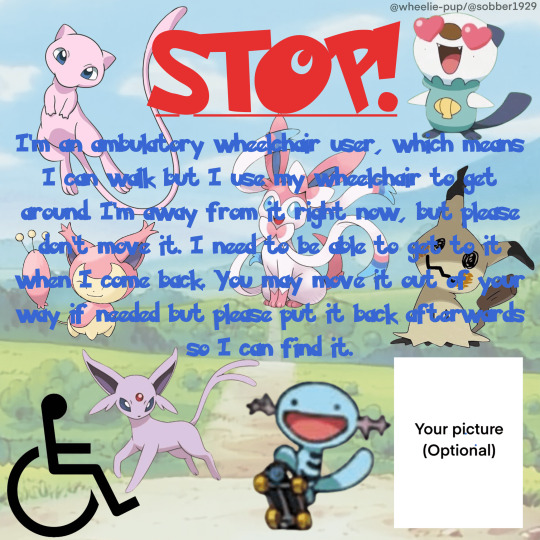
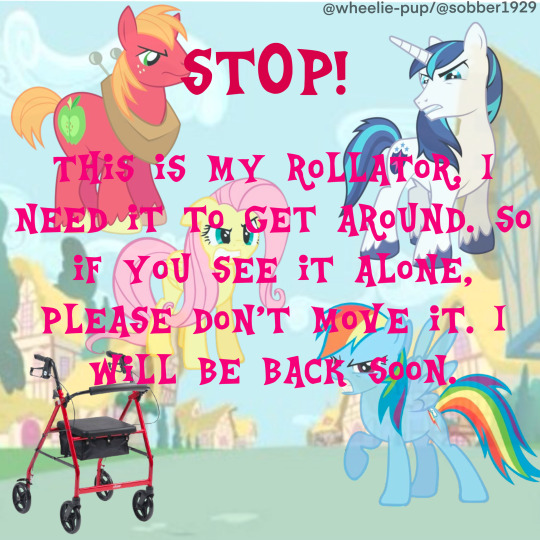

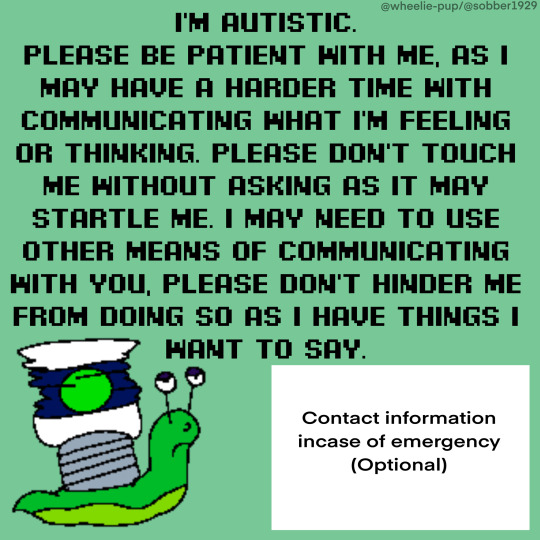




#orginal sobber#mobility aid#wheelchair#chronic illness#chronic pain#communication cards#disability cards#wheelchair users#aac cards#disability memes#mental illness awareness#neurodivergent#actually mentally ill#actually autistic#actually adhd#image desc in alt text#commissions open#commission
23 notes
·
View notes
Text
Can anyone who uses a wheelchair (especially a motorized chair) please explain to me what the process was like to find the right chair?
I live in America and it seems that the doctors just want me to order one online without trying it at all, which seems insane for such a very very specific and very expensive medical device.
In order to find an office chair that didn't hurt my back, I went to every single furniture store in Chicago. So it seems wild that the selection process for something way more expensive and important would be so vague and confusing. I'm really scared that I'll get the wrong one.
How do you get the right wheelchair??????
#wheelchair users#wheelchair user#new wheelchair user#I'm finally about to hopefully move into housing that would allow a wheelchair to go in and out#i have needed a chair for 5 years and have been struggling painfully and enormously without one#and now I'm close to getting it and the process is not at all clear#original#help#crippled#cripple punk#disabled#wheelchair#motorized wheelchair#electric wheelchairs#mobility aids#electric wheelchair#powerchair
17 notes
·
View notes
Text
"average able-bodied person knows 6 wheelchair users" factoid actualy just statistical error. average person knows 1 wheelchair user. Wheelchair Georg, who lives in a small rural town and knows over 1000 wheelchair users, is an outlier adn should not have been counted
40 notes
·
View notes
Text
No one’s saying it, so I fucking am.
I’ve never heard any mention about how blueapron and hellofresh and careof etc is accessible as in very useful for the disabled community. None. It’s always just “oh, it’s so useful if you’re busy blah blah blah.” And sure, I don’t know the first thing about how being sponsored works and what you’re allowed to say, but I can gather that they’ve been given guidelines by the company with some leeway to say it in their own style. Maybe I’ve heard one or two mention their adhd and sure, yeah, that counts—sorta. What I’m saying is no one’s mentioned anything like:
“With it all coming to my door, that means I don’t have to go through the stress of getting out in my wheelchair, through public transportation and the store and back with my groceries, especially since I don’t have anyone to help me. It just really helps with my stress levels and keeps me nourished without all those interactions with ablists.”
“If the meal’s already put together in my fridge, that means it’s like a frozen dinner without all the bad stuff, and that I don’t have to expend all that mental energy trying to figure out what I can cook or even handle eating. It’s all right there, like I’ve just gotten home from a fancy store without the physical exhaustion.”
“The vitamins all together in a packet mean I don’t have to spend the energy to open and close all those pill bottles or hurt my hands in doing so.”
Ablists, DNI
#disabled community#accessibility#sponsors#hello fresh#blue apron#care of#meals#food#vitamins#rant from a cripple#rant#cane users#wheelchair users#mental illness#autism
22 notes
·
View notes